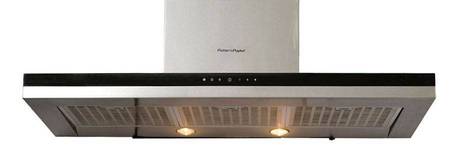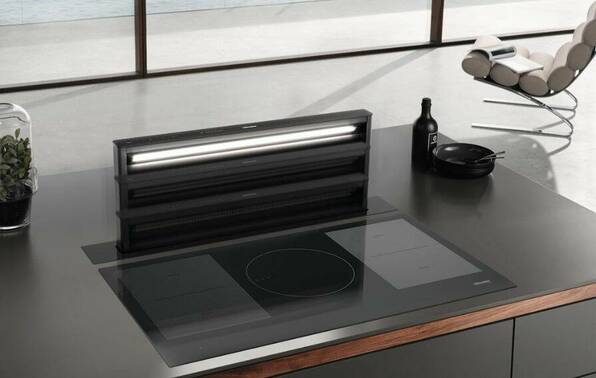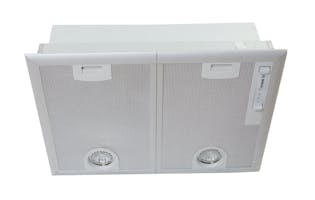Rangehoods
Find the best rangehood for your home with our buying guide and test results for 53 new and 48 discontinued models.
Cooking steam can really add to household condensation and moisture build-up, and kitchen odours can linger if not dealt with promptly. Installing a rangehood can help get rid of this steam and smells.
But the rangehood market is large and there are many types and models. Which type of installation and product should you choose and what factors do you need to consider?
Best rangehoods of 2025
Want to get rid of odours and moisture when you’re cooking? Find out which rangehood is best for your kitchen, whether it’s size, type, budget or performance that’s most important to you, or if you need to install one that performs well in recirculating mode.
-

Top-performing rangehoods
-

Best budget rangehood
-

Top undermount rangehood
-

Quietest rangehood

Get access to Consumer & see all reviews
✔ Personal support through our Consumer Rights Advice Line
✔ Premium articles and in-depth buying advice
✔ Add a Consumer magazine for even more exclusive content
Duct or recirculate?
When you put in a rangehood, it can be installed in ducted or recirculating mode. In our product database, each model is listed by the mode it was tested in. This means most models have two sets of test results because they can be used in both modes.
In ducted mode, smells and steam (which can be greasy from frying) are blown outside. It is now illegal to duct into the ceiling cavity, because the build-up of grease can be a fire hazard and the moisture can cause condensation and rot.
In recirculating mode, air is passed through a carbon or charcoal filter and recirculated back into the kitchen. This eliminates cooking odours and grease, but not moisture. This goes back into your kitchen, so it’s a second-best option.

Installing in recirculating mode is cheaper as no ducting is required, but you may need to buy a recirculating kit. You’ll also need to replace the carbon or charcoal filters.
How often you change the filters depends on how much and what type of cooking you do. Cooking that produces mainly steam means your filter will last longer than it will with high-fat cooking that produces strong smells. Manufacturers recommend replacing the filter every three to six months.
Rangehoods perform better in ducted mode. Also, it’s best to use rigid ducting if possible because flexible ducting has ridges which can impede airflow and affect performance.
For some people, ducting won’t be an option though – for example, if you live in an apartment, or if installation in ducted mode is just too expensive.
Types of rangehood
There are six types of rangehood available: fixed, tilting, sliding, canopy, undermount and downdraft. All usually come in 60cm and 90cm widths.
- Fixed hoods – shaped like a flat box, fixed to the wall or under a cupboard.
- Tilt hoods – mounted between cupboards with a front panel that tilts open.
- Retractable or slide-out hoods – mounted under a cupboard with a slide-out hood.
- Canopy hoods – similar to a fixed hood, but much wider and more expensive.
- Undermount or integrated hoods – built into a cupboard so unobtrusive.
- Downdraft hoods – recessed behind the cooktop and rise up when in use.
Fixed hoods

Shaped like a flat box, they’re fixed permanently to the wall or under a high cupboard. Some have a small, hinged visor. They can be fitted to a new or existing kitchen. DIYers should find these easy to install.
This type of hood works well with a couple of pots steaming away, but it will miss quite a bit of the steam if you’re using all four stove-top elements. And because they always stick out, they can get in your way.
Tilt hoods

These are mounted between cupboards and have a front panel that tilts open. The panel can be matched to your kitchen décor. To use the hood, you swing the front panel out over the cooktop.
Tilt hoods are more effective than fixed ones at removing large quantities of steam. So if you often cook with all four elements at once, a good tilt hood may be a better option. Controls on tilt models are usually somewhere behind the tilting front, and are a little harder to use than the front controls of fixed or canopy models.
Tilt hoods are usually considered for new rather than existing kitchens, because of their built-in nature. But if you’re getting new cupboards done, or don’t mind having to reconfigure your existing cupboards, they are worth considering.
Retractable or slide-out hoods

These are designed for kitchens in which you want the hood to be out of the way when it’s not in use.
Generally they’re mounted under cupboards and have an extension that slides out – the fan and light come on automatically. They tend to be less efficient at collecting steam because of the smaller steam collection area.
Canopy hoods
Canopy hoods are large and comparatively expensive. Once confined to commercial kitchens, they have joined a range of other high-quality cooking equipment that has found its way into domestic kitchens.

While other types are usually ducted through the wall, most canopy hoods have a vertical flue that takes cooking fumes out through the ceiling or wall.
The hood itself is usually made of stainless steel or glass, and can be deep and rectangular, or curved. Some are fixed to the wall while others hang from the ceiling. All the canopy rangehoods in our test were wall-mounted models.
With a more powerful fan, bigger chimney and greater width, canopy hoods often have a higher airflow than fixed types. They usually have additional features such as electronic controls, glass shelves, a rail for hanging implements and three or four fan speeds.
Undermount or integrated hoods

Also known as powerpacks, undermount rangehoods are hidden away above the cooktop, which makes them an unobtrusive choice. However, because they don’t necessarily cover the entire cooking area, they may not work as well as a canopy rangehood – depending on where your saucepan is located.
Downdraft hoods

Downdraft hoods are unobtrusive and stylish extractors that are recessed into the back of the cooktop. They rise up when required, sucking in moisture and smells and pulling them down and out through the duct.

What’s a downdraft kitchen extractor, and is it worth the extra cost?
Find out what downdraft cooktop extractors are and how they performed in our recent rangehood test.
Things to consider
- Size: With two pots on your cooktop, most hoods will cope pretty well and won’t let steam escape at the sides. However, most models won’t cope very well with four pots of simmering water, particularly if they’re only 600mm wide. Fixed hoods often fail to cover the front hobs. The bigger the rangehood, the more effective it will be at removing steam and odours. If you have the space, consider fitting a 900mm-wide rangehood over a 600mm cooktop. The extra width on each side will catch more steam.
- Claimed extraction (airflow) rates: Manufacturers will publish maximum airflow rates in m³/hr but over our many years of testing we’ve found these claimed rates often don’t correlate with actual performance. So don’t be fooled into thinking that a higher airflow rate means better extraction – check our test results first.
- Filters: All rangehoods have a filter to trap oil and grease. Reusable metal filters can usually be put in the dishwasher. The carbon filters for recirculating mode need to be replaced regularly and are an ongoing cost. Check that they’re readily available, as they usually need to be replaced at least once a year and on average every three to six months.
- Fans: Efficiency is not necessarily related to the number of fans. Some single-fan models can outperform two-fan models.
-
Lighting: For visibility over the cooking area, two bulbs are better than one. However, our good and bad points in the reviews will highlight models that have good or bad visibility.
Check that the bulbs are easy to replace. Some require an electrician to change them, or a call to the manufacturer’s technical support helpline. - Exterior: The rangehood should be easy to clean and have no nooks or crevices in which dirt and grease can build up. Fixed rangehoods with a smooth underside are generally easier to clean than retractable ones.
- Maintenance: Rangehoods are not maintenance-free. You need to remove and wash the filter, clean the body of the hood and occasionally change a light bulb. You should be able to perform most of these tasks easily – if there’s a problem, contact your distributor.
- Controls: It’s pretty standard for hoods to have their controls in an easy-access position on the front. However, some models have sliding switches that are a little tricky to set in the right position. Touch controls are easier to use.
- Install height: Minimum install heights above the cooktop will vary depending on the rangehood, but are usually around 600-650mm. Lower heights will be more effective at removing steam and odours, but bear in mind that you may bang your head on the corner if you have a larger canopy-style hood that sticks out more. If you install the hood higher (more than 800mm), you may compromise the rangehood’s performance. Check the manufacturer’s recommendations before installing.

Noise
All rangehoods are noisy, especially if you are using the higher fan speeds. Noise is going to be an important consideration for purchasing, so take note of the noise results in our tests.
Some models are quieter in recirculating mode and others are quieter in ducted mode, so make sure you check which results you are looking at.
Our current average noise levels for ducted mode on the lowest fan speed is 50 decibels, and on the highest speed it is 66dB. In recirculating mode these figures are 54dB and 65dB respectively. Some models tested go above 70dB on the highest fan setting.
Bear in mind that 65dB is around three times as loud as 50dB, so it’s a significant increase in noise level as you go up the fan speeds. A level of 60dB is about as loud as a normal conversation between two people at a distance of one metre.

How ducting types and installation can make your rangehood quieter
We explain the factors that can influence how loud a rangehood is.

People's Choice
Our People's Choice awards are granted to brands that consistently rate above average for customer satisfaction and meet out other performance criteria. Become a member and see which brands have earned a People’s Choice award.
Which rangehoods are most reliable?
We ask thousands of Consumer members about their products to find out which brands are most reliable and satisfying to own. The results are available to members and Digital Pass holders.
We've tested 101 rangehoods.
Find the right one for you.
Beko
.jpg&w=315&q=75)
Bosch

Bosch
